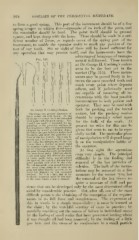Page 954 - My FlipBook
P. 954
964 DISEASES OF THE PERIDENTAL MEMBRANE.
to form a good spring. This part of the instrument should be of a fine
spring temper to within three-sixteenths of an inch of the point, and
the remainder should be hard. The point itself should be ground
square, and kept sharp with the hone. These should be made in a suf-
ficient number of forms, as regards curve of the spring part of the
instrument, to enable the operator easily to reach any portion of the
root of any tooth. Six or eight of these will be found sufficient for
anv operation that may present itself, and the instruments have the
advantage of being easy of manage-
ment if well formed. Those known
n \ n in as Dr. George H. Cushing's scalers
seem to be the best yet in the
market (Fig. 515). These instru-
ments may be passed freely in be-
tween the most crowded teeth and
reach every point where deposits
adhere, and if judiciously nsed
are capable of removing all in-
crustations Avith the least possible
inconvenience to both patient and
operator. They may be used with
Dr. George H. Cushing's Scalers. both the pushing and the lateral
The forms and general character of motion, but the pushing motion
these scalers are well shown. All the relied upon
instriinieiits except No. 6 are intended should be especially
to be used with the push stroke. Nos. for the bulk of the work. At
1 and 2 are specially intended for ap-
plication to the posterior surfaces of present no rules for this can be
lower incisors ; they are also admirably
adapted for removing calculous depos- given that seem to me to be espe-
its below the gum between molars and cially useful. The particular plans
bicuspids, and from the posterior sur-
faces of tlie last molars. No. 2 can be of manipulation will depend large-
passed quite to the extremity of mo.st
roots with less disturbance to the sol't ly on the manipulative habits of
tissues than a thicker or more rigid
instrument would cause. Nos. ''• and 4 the operator.
are for removing deposits at and below
the gum between the teeth, particularly At first sight the oj^erations
the lower front teeth. They can also be seem very simple. The principal
easily used upon the sides of the roots
of many teeth, being passed toward difficulty is in the finding and
the ape.x of the root in a line nearly or
quite parallel with that of the axis. removal of the last particles of
No. 5 is intended to be passed between The bulk of the incrus-
the lower front teeth at or near the calculus.
gum and then directly upward, to re- tations may be removed in a few
move the deposits on the proximal
surfaces. No. G is a hoe, and is in- moments by the merest tyro, but
tended to be passed quite to the apex
of the roots where a hoe is desired. the removal of the last traces re-
quire a measure of skill and pa-
tience that can be developed only by the most determined effort
aided by considerable practice. But, after all, one of the most
difficult points is the obtaining of the conception of the require-
ments in its full force and completeness. The expression of
this in words is a simple impossibility it must be learned at
;
the chair ; by the watchful scrutiny of cases in practice ; by
carefully searching out the causes of failure in individual cases;
by the finding of small scales that have prevented healing where
it was thought all had been removed ; by the finding of a little
pus here and the cause of its continuance in a small particle


